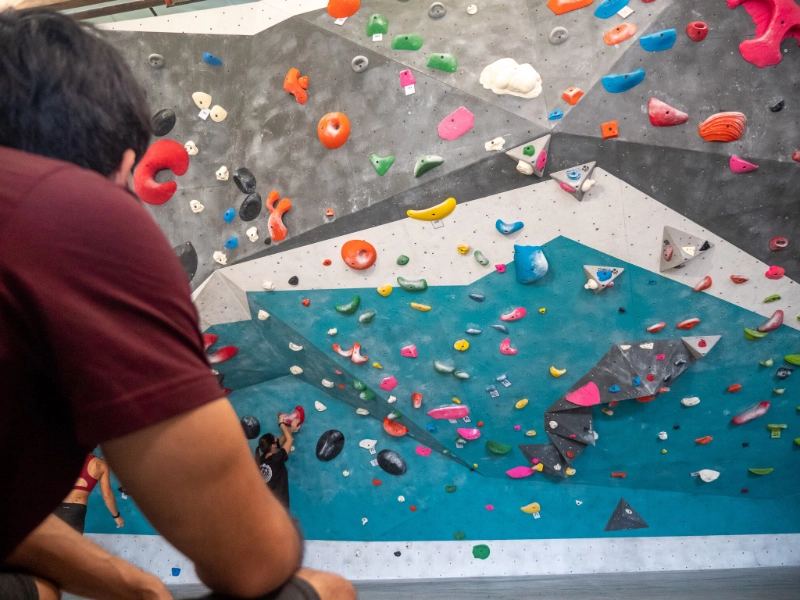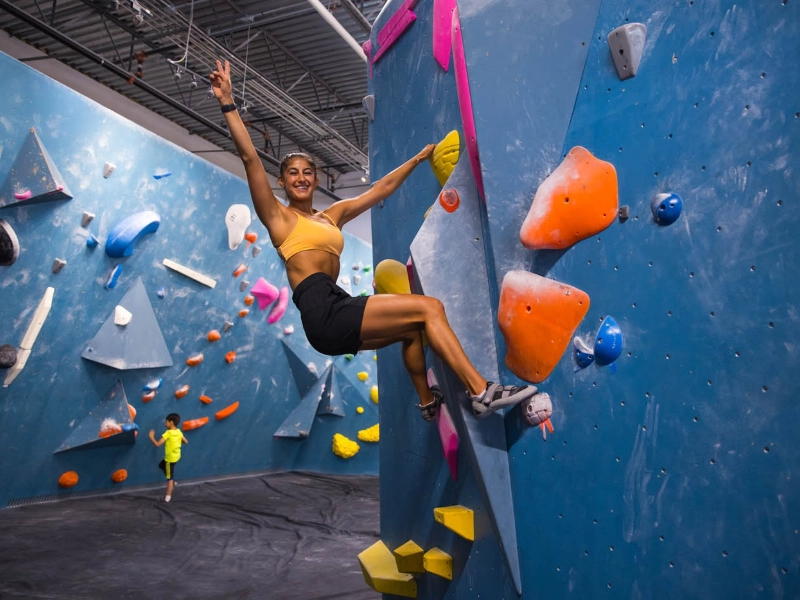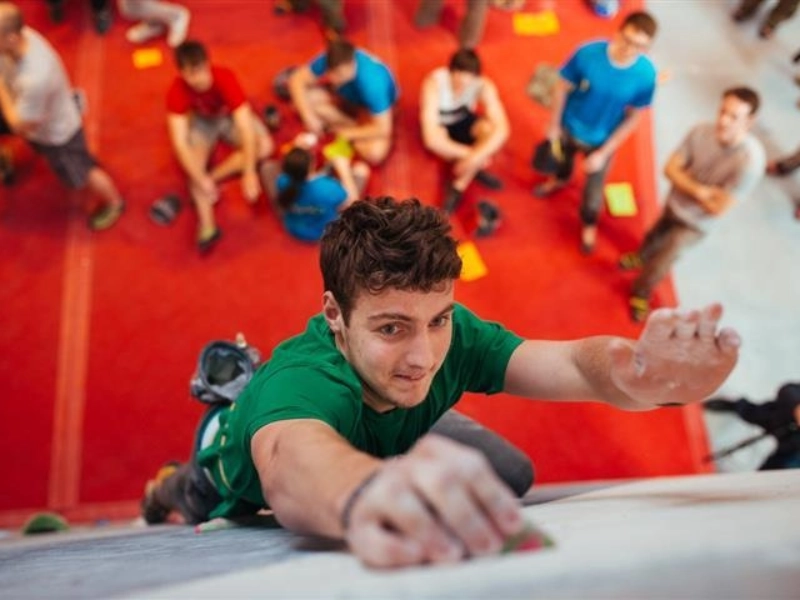A fun and interesting method to work out at the gym is to boulder. It's also an excellent mental-health exercise that tests the brain's ability to solve demanding puzzles and do difficult tasks. Climbers need adequate crash pads and spotters to ensure their safety. To prevent injuries during bouldering falls, it's also essential to practice proper falling skills.

 Bouldering is a minimalist activity, and people are often drawn to it because of its simplicity. But in the event of a serious fall, it's also simple to injure oneself due to the absence of a safety rope. Because of this, it's critical to practice falling properly and develop the ability to cushion your falls to reduce the risk of injury. Land with your feet first, bend your knees, and roll is one method to accomplish this. This will lessen the pressure on your feet and knees by distributing the power of impact across your legs, hips, and shoulders.
By using this approach, you can increase your comfort level when having unplanned tumbles while bouldering. As you climb higher and more often, it will also help you prevent major injuries and increase your confidence in your climbing abilities.
Bouldering is a minimalist activity, and people are often drawn to it because of its simplicity. But in the event of a serious fall, it's also simple to injure oneself due to the absence of a safety rope. Because of this, it's critical to practice falling properly and develop the ability to cushion your falls to reduce the risk of injury. Land with your feet first, bend your knees, and roll is one method to accomplish this. This will lessen the pressure on your feet and knees by distributing the power of impact across your legs, hips, and shoulders.
By using this approach, you can increase your comfort level when having unplanned tumbles while bouldering. As you climb higher and more often, it will also help you prevent major injuries and increase your confidence in your climbing abilities.
 Bouldering requires you to rely on the mats and other padding surrounding the walls because there isn't a rope to catch you. Although at first intimidating, you will eventually learn how to fall safely with practice. When bouldering, attempt to land flat by tucking your chin into your chest, bending your knees, and so on. By doing this, the force of the hit will be distributed across your shoulders and back rather than landing entirely on your hands and feet, which could injure you. To avoid sprains and strains, avoid using your arms to break your fall.
Always warm up before climbing, and if you need assistance falling, ask for a spotter. This will lower your chance of damage and boost your self-assurance when bouldering. Wishing you luck!
Bouldering requires you to rely on the mats and other padding surrounding the walls because there isn't a rope to catch you. Although at first intimidating, you will eventually learn how to fall safely with practice. When bouldering, attempt to land flat by tucking your chin into your chest, bending your knees, and so on. By doing this, the force of the hit will be distributed across your shoulders and back rather than landing entirely on your hands and feet, which could injure you. To avoid sprains and strains, avoid using your arms to break your fall.
Always warm up before climbing, and if you need assistance falling, ask for a spotter. This will lower your chance of damage and boost your self-assurance when bouldering. Wishing you luck!
 Bouldering is still a high impact activity even though it appears safer than most other types of rock climbing because you don't need a rope and the pads below absorb your fall. Because of this, it's crucial to understand and rehearse safe falls before climbing a steep wall.
You must spread your feet and tuck your knees into your chest in order to execute a backward roll. Push yourself backward and down on your butt as soon as your feet touch the mat, and then roll onto your stomach to assume a flat position. This will lessen the force of your fall and keep your hands and torso from being severely injured.
Make sure you take off any jewelry and loose clothing, and make sure the landing area is free of any objects that could injure people. Furthermore, you should never try a climb before you're ready; doing so will just make you frustrated and possibly hurt.
Bouldering is still a high impact activity even though it appears safer than most other types of rock climbing because you don't need a rope and the pads below absorb your fall. Because of this, it's crucial to understand and rehearse safe falls before climbing a steep wall.
You must spread your feet and tuck your knees into your chest in order to execute a backward roll. Push yourself backward and down on your butt as soon as your feet touch the mat, and then roll onto your stomach to assume a flat position. This will lessen the force of your fall and keep your hands and torso from being severely injured.
Make sure you take off any jewelry and loose clothing, and make sure the landing area is free of any objects that could injure people. Furthermore, you should never try a climb before you're ready; doing so will just make you frustrated and possibly hurt.